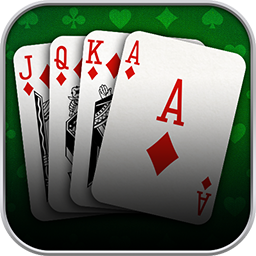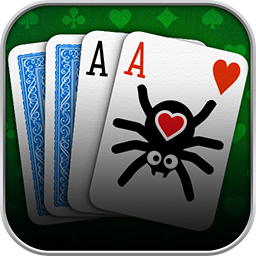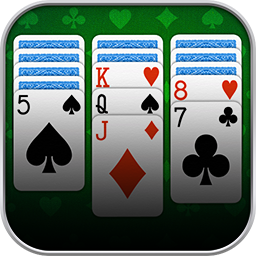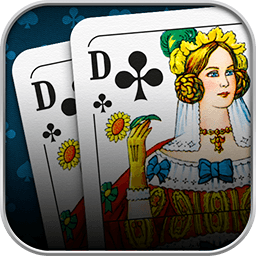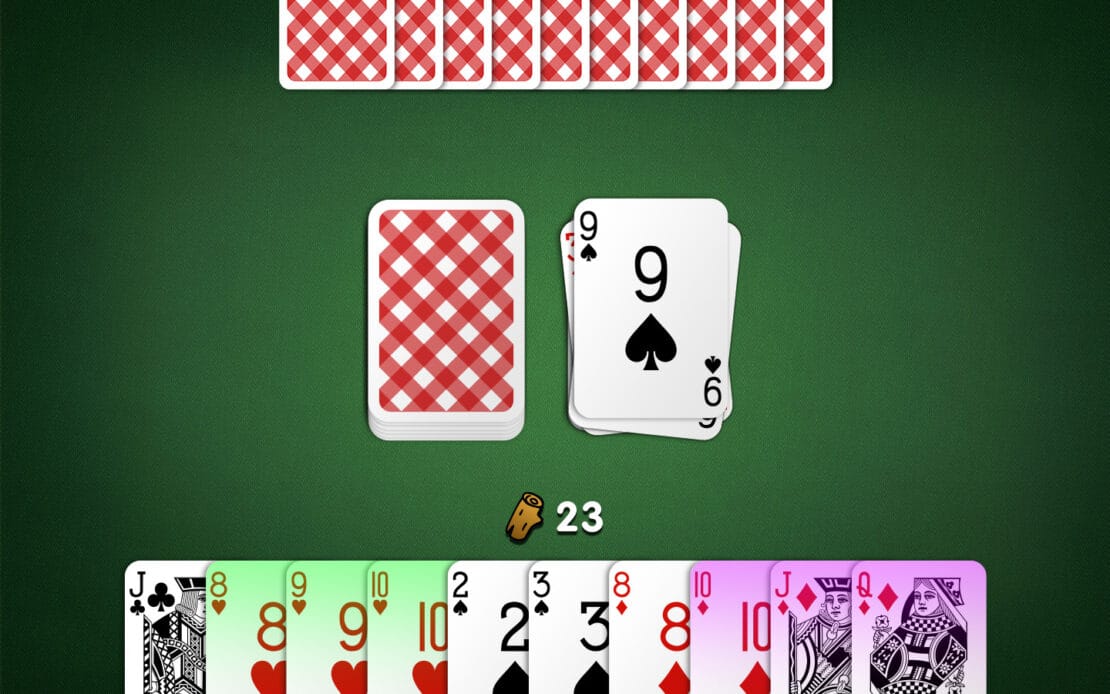
Gin Rummy is a two-player card game with the objective of being the first player to form all of your cards into runs and groups in your hand.
The game is also known by other names, such as Oklahoma Gin, Knock Rummy, Gin, and Poker Gin. Some of these names might refer to a slightly different rule set. You can play Gin Rummy including exciting variants in our game at the Gin Rummy Palace!
The variety in names also came about because of Gin Rummy’s wide reach across the globe: It is especially popular in the United States, where it originated, and in other English-speaking countries. Gin Rummy is also played in many other countries, including India, and in some European countries, such as Germany and France.
To play the game, you need two players and a standard deck of 52 French-suited cards. The dealer shuffles the deck and deals ten cards to each player. The remaining cards are placed face down to form the draw pile. Its top card is revealed as the base of the discard pile.
To learn all Gin Rummy Rules in detail, have a look at our Gin Rummy School featuring the basic Gin Rummy Rules, rule variants, and more! Here, we continue with a brief overview.
The game phase mainly consists of drawing and discarding. The non-dealer begins by picking up the top card from the draw pile or the discard pile. The player can then use the card to form sets and runs in their hand. To end their turn, the player must discard one card face-up on the discard pile.
A player can use the cards in their hand to form melds. Any cards not used in melds are deadwood. Any card can only be used in a single meld. Possible meld formats in Gin Rummy are Runs and Groups.
- Runs: three or more cards of the same suit in sequence
- Groups: three or four cards of the same rank
Although Gin Rummy has similar meld formats to Rummy, Gin Rummy is no shedding game. You combine the cards in your hand without putting them on the table before the play phase ends.
The play phase usually ends after a player knocks. That means they announce that they have formed most or all of their cards into sets and runs before they discard their final card. The player must have 10 or fewer deadwood points left in their hand in order to knock.
The points in hand are the card values: Numbers score their pip value, face cards score 10 points, and the Ace scores one point.
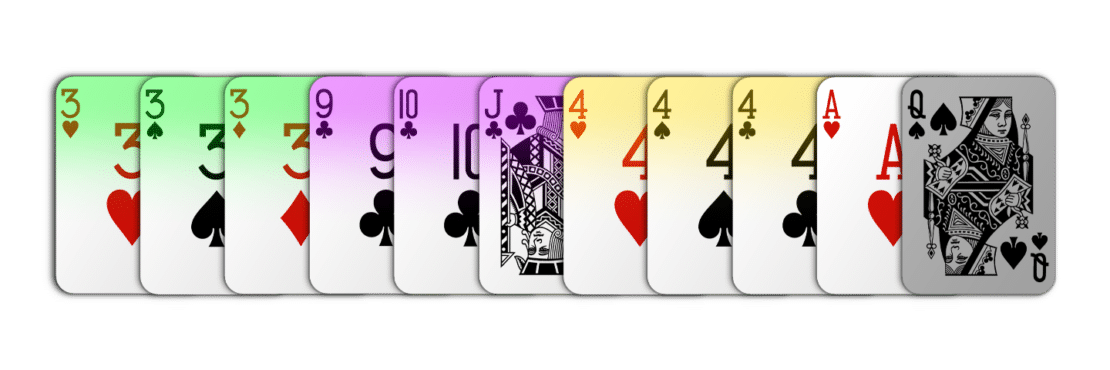
Then, both players reveal their hands. If the knocking player has deadwood, the non-knocker is allowed to add their own deadwood cards to the knocking player’s melds, if possible. After that, the deadwood scores of the knocking player are compared to the deadwood scores of the non-knocker. The player with fewer deadwood points wins, and potential bonus points may be awarded.
If you like, you can play multiple rounds until one player scores 100 points and wins the game or until you finish a certain number of rounds and compare total scores after that.

